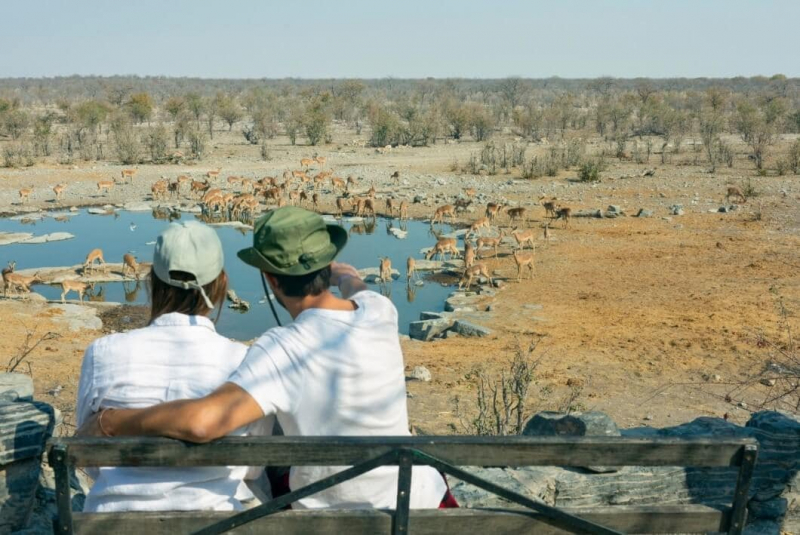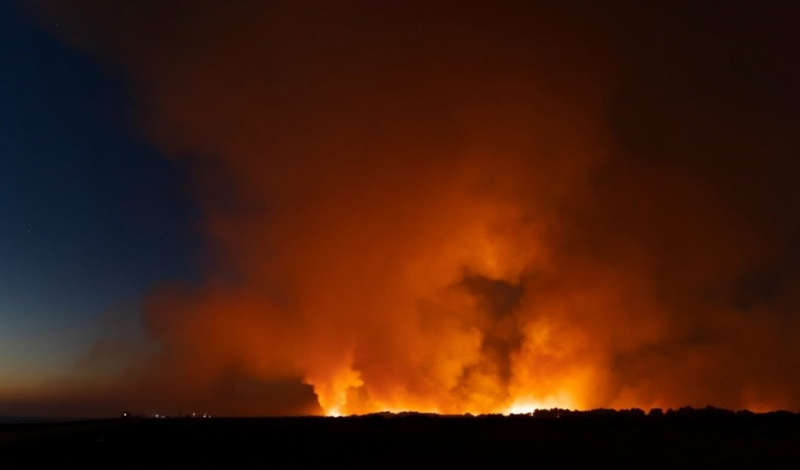A substantial wildfire has surged through Namibia’s Etosha National Park, scarring over a third of the enormous reserve and, generally speaking, jeopardizing Namibia’s tourism recovery. After a grueling week-long struggle, authorities brought the blaze under control, yet officials now brace themselves for a potential multi-year reduction in visitor numbers to what is arguably one of southern Africa’s crown jewels.
Established back in 1907 during German colonial rule, Etosha National Park sprawls across roughly 20,000 square kilometers. It essentially functions as a critical sanctuary for Namibia’s considerable biodiversity. The park abounds with iconic wildlife—majestic lions, of course, as well as elephants, elusive leopards, not to mention graceful giraffes, and indeed, herds of zebras—drawing adventure seekers and nature enthusiasts from across the globe. As Namibia’s premier tourist draw, Etosha has long underpinned the country’s economy, offering unparalleled chances for visitors to witness animal kingdom dramas play out against the backdrop of its shimmering salt pan.
The fire’s toll? Staggering. Official damage estimates sit around 38 percent of the park’s expanse. However, unofficial reports hint at something even greater. Satellite imagery, for instance, paints a rather grim picture of vast blackened swathes where lush grasslands once thrived. While exact figures remain, in a sense, elusive, authorities have confirmed an undetermined number of animals have perished in the inferno, underscoring the rather profound ecological blow that has struck the park’s fragile ecosystem.
“It’s a hard blow that we are suffering, both for the fauna and for the flora,” observed Sikongo Haihambo, Executive Director of Namibia’s Ministry of Environment, Forestry and Tourism. “A recovery is possible, but naturally, it will take some time.”
Haihambo tempered immediate alarm with a considered outlook regarding economic ripple effects. “As far as Namibia’s tourism is concerned, I don’t think we will suffer a prolonged decline, but rather a recovery over a period of two to three years,” he added, signaling cautious optimism amid the ashes.
Click here to preview your posts with PRO themes ››
Namibia’s tourism sector, still nursing wounds from the COVID-19 pandemic era, had begun staging a robust comeback. A recent report by Simonis Storm Securities highlighted hotel occupancy rates, specifically climbing to 67.55 percent in August. That was the highest point since 2019, and reflected international travelers’ renewed interest. In 2022, the sector constituted about 6.9 percent of the country’s gross domestic product (GDP). This underscored its vital role as a key economic driver in a nation where natural wonders remain its primary export.
The fire’s origins are still under investigation, but its ferocity immediately demanded a full response from basically everyone. The Namibian government mobilized hundreds of troops to combat the flames, finally containing the main blaze within the park late Monday night. However, firefighting crews remain on high alert, tackling sporadic outbreaks that have even spilled over into the neighboring Omusati and Oshana regions, where dry conditions coupled with strong winds have exacerbated the fire’s spread.

Conservationists and tour operators now grapple with the path ahead. Replanting efforts, wildlife monitoring programs, plus infrastructure repairs will no doubt prove essential in restoring Etosha’s appeal. Experts warn, though, that the potential psychological impact on visitors – from stark images of charred landscapes dominating global headlines – could well linger. “Etosha isn’t just a park; it’s a living story,” noted one anonymous local guide. “Healing it ultimately means rewriting that story for the world once again to see.”
As Namibia looks to the horizon with guarded hope, the fire stands as a reminder of the inherent vulnerabilities facing Africa’s wildlife havens in the current era of climate unpredictability. With Haihambo’s timeline always in mind, there exists hope that the park’s resilient spirit – mirroring that of the animals it strives to protect – will rise from the embers, steadily drawing travelers back to its timeless wonders.


